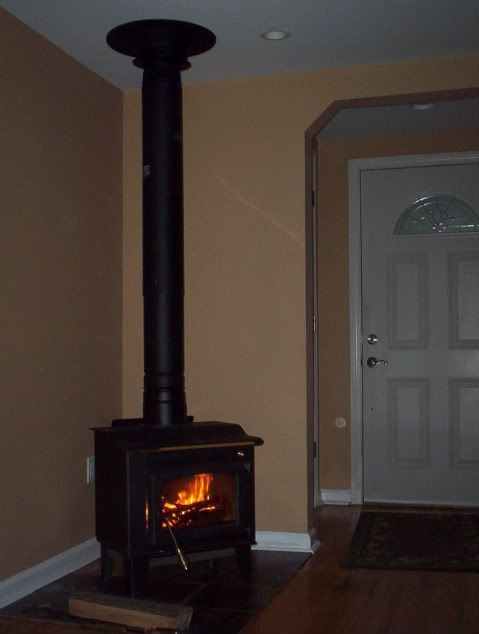I am late to this mind boggling thread. Some things said are out and out BS and all you young fellows have no idea what you have even said.
Back in the past up untill about the mid 1950's it was rare to have a furnace in your house in the country and those big old farm houses. They were for the most part heated with a big pot belly stove in the living room and a wood burning cook stove in the kitchen. They heated the house comfotably even by todays standards. Yes it some times was a shock to wake in the morning and no one had fed that air leaking pot belly stove some time during the night so the upstairs hard wood floor was down right cold on the feet.
I have a England 28 3500 in my basement almost in the center but to one side. It is ducted into the forced air furnace duct work I have not use but a few times in 32 years.
I have very rarely even ran the fan on the England furnace. that furnace heats the basement nicely where there is a family room, bed room, 1/2 bath room and huge walk in closet, my man cave and the furnace, well tank and water softner. Since heat rises it heats the up stairs by convection thru the floor.
Problem I see with most stove installs is they really are not thinking it thru, number one a little cheap heat in one room and a fancy glass front, fancy brass work or some such stuff.
In reality the wood burner if wanting to heat the whole house should be located in the center as close as you can in the basement to take advantage of the convection heat and even spending a little money and getting a ad on furnace so yopu can duct the heat from it to the duct work for your costly to run furnace.
Failing to have a basement then install the wood burner in the most center room of the house.
But saying a whole can not be heated with a wood burner is just plain BS
Was done sice the day the first pot belly stove was built, and the people built the house to not be a fancy place but a functional home so a pot belly stove can heat them.
I've been in some of todays 2000 sq ft homes and I would give yor 39 cents for one. living rooms and family rooms at one end and bed rooms and bath rooms at th eother around a corner.
I bought my home second hand,
I would shoot the builder if i had hired him to build it because of the front door right under a valley where the garage conects to the house.

. Al

























































